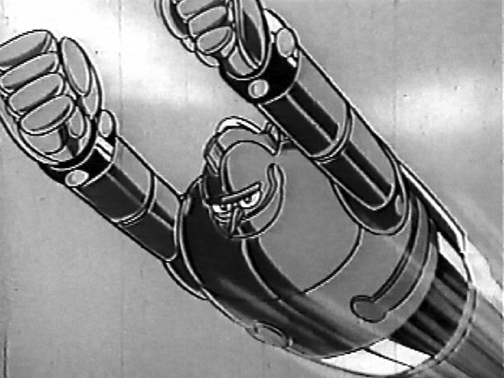From the man who brought us Everything Is a Remix
Too Much On My Mind
If you don’t like hearing bits of 78 different records in 15 minutes this isn’t for you. For the rest of us: Come Down Selector.
Includes: Stevie, Kraftwork, Bing Crosby, Tower of Power, Chubb Rock, John Lennon, Led Zep, Blind Blake, Dave Brubeck, Carol Burnett, Harry Nilsson, Louis Armstrong, King Tubby, James Brown, Lewis Black, Sarah Vaughn, and Creedence. Don’t forget the Creedence.
SPLAT-a-TAT-FWAPP.
Walk Tall
If you’ve never read Chris Health’s 2005 GQ profile of Merle Haggard, do yourself a favor and check it out:
“You know, I woke up this morning in a wimpy mood,” he says. “Men don’t like to be wimps. But I have reached the point, it’s really sad to mention, I have reached the point where… They always say you’ll know when it’s time. Speaking of the place in your life when you finally say: Do you want to die on a highway or do you want to die in bed? I’m tired of it. I’m tired of it. I’m tired of singing ‘Okie from Muskogee.’ I’m tired of the whole gig. Somewhere around my age, people begin to feel insignificant and small and unnecessary and not so much in demand.” There is plenty of work out there for him, but its attraction is waning. “I guess I’ve come to a point in my life where…I hate to admit fear. I hate to even admit fear’s part of my reasoning. But I have some dementia that’s coming around, and there’s a bit of a nervous tic—I don’t know what that’s about; I guess it’s growing old. And I don’t feel as bulletproof as I should feel…. I’ve traveled all over the world without a seat belt for forty-two years. Forty-three. And I’m a bit of a gambler and have a feel for odds. The odds are really against me.”
…There’s a steel and sadness in his face, a proud combination of force and frailty; whatever the gracious opposite of serenity is, that is what Merle Haggard oozes. He smiles. “There comes a time when you can’t do it anymore. It’s a double-edged sword: if I can manage to get over the wispiness and continue to go, I’ll probably live longer and probably enjoy it. But I’m at that pivot point in my life where I can swing that way and give my last bit of strength to the music of my life, or I can give it to my little family here.” He gestures toward the open kitchen, empty now, but through which his wife and children are constantly flowing, past the post on which their heights over the years have been marked. “And music has supported my little family; my little family knows what music means to me. I am music. Music is me, and I am music. But which one is which? Which one do you favor in the latter moments?”
[Photo Credit: Michael Macor, S.F. Chronicle]
Let’s Get Stoopit
My pal the Ill Chemist has a dope 15-minute jam up on Mixcloud. It’s called Too Much Information Vol I and it features, among others, Lord Buckley, The Who, Yma Sumac, Sly and the Family Stone, Mr. Magoo, Sister Rosetta Tharpe, Biz Markie, Duke Ellington, the Beastie Boys and Buddy Hackett.
Listen, laugh and shake…your…rump-ah!
Schmooze-a-Long
Billy Joel talks with Alec Baldwin on Here’s the Thing. Two Island guys. Cheap laffs and Baldwin is a good interviewer.
My Dear, My Dear, My Dear, You Do Not Know Me (But I Know You Very Well)
Nice piece over at Spin celebrating the 20th anniversary of “Passin’ Me By” by the Pharcyde.
And the classic remix:
[Featured Image: Lorenzo Porras]
Play it Again (and again and again)
Sometime in the late 1990s I read up on Jazz music. I went through a pile of books and my favorite overview came from Ted Gioia in his book The History of Jazz.
I thought about Gioia today when I read this review of his new book, The Jazz Standards, in The Los Angeles Times:
“The Jazz Standards” is an attempt to offer a kind of one-stop shop overview of the genre, looking not so much at the musicians as at the songs. An alphabetical survey of 252 classic pieces, it is to some extent an extrapolation of “The Real Book” — “the underground collection of jazz lead sheets that began circulating in the 1970s” that itself grew out of a series of “fake books,” bootleg compilations used by jazz players to work their way through the entire tradition. This history is fascinating, a reminder that jazz is at heart a vernacular medium in which the most essential skill for a musician may be the ability to think on his or her feet.
[Photo Credit: William Claxton]
Heppy Birfdaze
Mick Jagger is sixty-nine.
Here’s a cool bit from Keif over at Letters of Note (complete with a Goon Show reference in the opening paragraph).
Everyone’s a Crrrrrrrritic
Via Kottke check out this bit of Mile Davisness over at Noise Made Me Do It.
The Man
David Remnick has a long profile on Bruce Springsteen in the New Yorker:
Early this year, Springsteen was leading rehearsals for a world tour at Fort Monmouth, an Army base that was shut down last year; it had been an outpost since the First World War of military communications and intelligence, and once employed Julius Rosenberg and thousands of militarized carrier pigeons. The twelve-hundred-acre property is now a ghost town inhabited only by steel dummies meant to scare off the ubiquitous Canada geese that squirt a carpet of green across middle Jersey. Driving to the far end of the base, I reached an unlovely theatre that Springsteen and Jon Landau, his longtime manager, had rented for the rehearsals. Springsteen had performed for officers’ children at the
Fort Monmouth “teen club” (dancing, no liquor) with the Castiles, forty-seven years earlier.The atmosphere inside was purposeful but easygoing. Musicians stood onstage noodling on their instruments with the languid air of outfielders warming up in the sun. Max Weinberg, the band’s volcanic drummer, wore the sort of generous jeans favored by dads at weekend barbecues. Steve Van Zandt, Springsteen’s childhood friend and guitarist-wingman, keeps up a brutal schedule as an actor and a d.j., and he seemed weary, his eyes drooping under a piratical purple head scarf. The bass player Garry Tal-lent, the organist Charlie Giordano, and the pianist Roy Bittan horsed around on a roller-rink tune while they waited. The guitarist Nils Lofgren was on the phone, trying to figure out flights to get back to his home, in Scottsdale, for the weekend.
Springsteen arrived and greeted everyone with a quick hello and his distinctive cackle. He is five-nine and walks with a rolling rodeo gait. When he takes in something new—a visitor, a thought, a passing car in the distance—his eyes narrow, as if in hard light, and his lower jaw protrudes a bit. His hairline is receding, and, if one had to guess, he has, over the years, in the face of high-def scrutiny and the fight against time, enjoined the expensive attentions of cosmetic and dental practitioners. He remains dispiritingly handsome, preposterously fit. (“He has practically the same waist size as when I met him, when we were fifteen,” says Steve Van Zandt, who does not.) Some of this has to do with his abstemious inclinations; Van Zandt says Springsteen is “the only guy I know—I think the only guy I know at all—who never did drugs.” He’s followed more or less the same exercise regimen for thirty years: he runs on a treadmill and, with a trainer, works out with weights. It has paid off. His muscle tone approximates a fresh tennis ball. And yet, with the tour a month away, he laughed at the idea that he was ready. “I’m not remotely close,” he said, slumping into a chair twenty rows back from the stage.
Million Dollar Movie
This looks promising.
Nothing Sounds Quite Like an 8-0-8
All Hail The Beat | Nelson George from Focus Forward Films on Vimeo.
Couple things for you music nerds.
--Earl Weaver




























